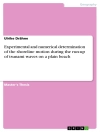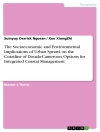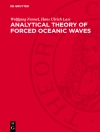This edited volume on challenges in structural and bridge engineering brings together contributions to this important area of engineering research. The volume presents findings and case studies on fundamental and applied aspects of structural engineering, applied to buildings, bridges and infrastructures in general, and heritage patrimony. The scope of the volume focuses on the application of advanced experimental and numerical techniques and new technologies to the built environment. The volume is based on the best contributions to the 2nd Geo MEast International Congress and Exhibition on Sustainable Civil Infrastructures, Egypt 2018 – The official international congress of the Soil-Structure Interaction Group in Egypt (SSIGE).
表中的内容
Retrofitting gravity load designed r.c frames using frp.- Condition monitoring of overhead line equipment (ohle) structures using ground-bourne vibrations from train passages.- Application of nano-silica in concrete for bridges in vietnam for sustainable development.- Frp tubes filled with reinforced concrete subjected to cyclic axial loading.- Ultimate flexural capacity prediction of rectangular frp tube beams filled with concrete.- Reinforced concrete multi-rib arch bridge strengthened by changing structural system.- The influence of spectral responses on the structures heights.- Effect of steel slag on cold bituminous emulsion mix.- Post-consumer cullet and potential engineering applications in north America.- Production of building bricks using cement kiln dust ckd waste.- Carbon fiber reinforced polymers (cfrp) for strengthening and seismic retrofitting of historical circular masonry stone columns.- The impact of steel fibers on the properties of self compacting concrete.- Assessing the potential value of a shm deployment on a proposed footbridge.- Estimating seismic demands for displacement-based design of tall buildings.- Verification of mechanism on improvement of drying shrinkage or air permeability on concrete using blast furnace slag sand based on pore structure.- Effect of wet-mat curing time on chloride permeability of concrete bridge decks. The effect of underground stories on the dynamic response of high-rise buildings.- Engineering properties of self-compacting concrete containing class c fly ash and processed slag sand.- Across wind load analysis using cfd for sustainable design of tall structures.- Utilization of ground penetrating radar (gpr) in the non-destructive assessment of frp laminate-concrete bond strength.- Indirect tensile stiffness and permanent deformation of microwave treated cold bituminous emulsion mixtures (cbems) containing cementitious activated waste fly ash.- Risk assessment of open frame platform structures using analytical fragility curves.- Seismic risk assessment of pipe rack structures using analytical fragility curves.- Ductility-based seismic vulnerability assessment of rc bridge piers.- Behavior of boxed cold-formed steel as composite beam with rebar as shear connector.- Nonlinear finite element analysis of cfrp shear walls subject to blast loading.- New technology of concrete surface improvement and soil properties.- Probabilistic shear strength of bolted joints in offshore.- Xrdf, sem and compressive strength properties of a new alkali activated fly ash concrete mortar.- Stability of concrete containments in nuclear plants under jet impact loads.- Probabilistic thickness of cfrp plates bonded to reinforced concrete bridge decks.
关于作者
Hugo Rodrigues is Senior Lecturer at the School of Technology and Management, Polytechnic Institute of Leiria, Portugal, teaching several topics related with Structural Analysis, Building Pathology and Rehabilitation. He received his Ph.D. in Civil Engineering from the University of Aveiro in 2012. His experience in Seismic analysis, having participated as a team member in research and development projects, specialized consultancy studies ordered by several public institutions and companies regarding the assessment of seismic risk. His major research interests are Building Rehabilitation, Structural Health Monitoring and Seismic Safety including experimental and numerical activities. Research member of the RIsks and Sustainability in Construction (RISCO). He has co-authored more than 150 publications in top-tier peer-reviewed journals and national and international conferences.
Fellow of the British Royal Academy of Engineering, Amr Elnashai is the Dean of Engineering at the Pennsylvania State University, and the Harold and Inge Marcus Chair of Engineering. He was previously head of the Department of Civil and Environmental Engineering at the University of Illinois at Urbana-Champaign, USA and the Bill and Elaine Hall endowed professor in the same department. He was Director of the NSF multi-institution interdisciplinary Mid-America Earthquake Center (2004-2009). He was also Director of the NSF Network for Earthquake Engineering Simulations (NEES) Laboratory at Illinois (2002-2009). Amr obtained his Bachelor of Science degree from Cairo University, followed by M.Sc. and Ph.D. degrees from Imperial College, University of London. Before joining the University of Illinois in June 2001, Amr was Professor of Earthquake Engineering and Head of Division at Imperial College (1985-2001). He has been Visiting Professor at the University of Surrey, UK, since 1997. Other visiting professor appointments include the University of Tokyo, the University of Southern California, and the European School for Advanced Studies in Reduction of Seismic Risk, Italy.












